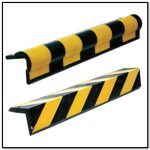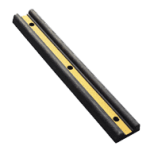Introduction
Definition of speed bumps and humps
Speed bumps and humps are traffic calming devices that are designed to reduce vehicle speed in specific areas. They are typically raised sections of the road surface, made of materials such as asphalt or concrete, and are strategically placed to slow down vehicles. These devices play a crucial role in improving road safety by forcing drivers to slow down and pay attention to their surroundings. Despite their effectiveness, there are several common misconceptions about speed bumps and humps that need to be debunked.
Purpose of speed bumps and humps
The purpose of speed bumps and humps is to slow down vehicles and improve safety on the roads. These traffic calming measures are typically installed in areas where speeding is a concern, such as residential neighborhoods, school zones, and parking lots. By forcing drivers to reduce their speed, speed bumps and humps help prevent accidents and protect pedestrians, cyclists, and other road users. They also help to create a more peaceful and livable environment for residents by discouraging excessive speeding and reckless driving. While some people may view speed bumps and humps as an inconvenience, their primary goal is to promote safer and more responsible driving habits.
Common misconceptions
In this article, we will debunk some common misconceptions about speed bumps and humps. Despite their effectiveness in reducing speeding and improving road safety, there are several misconceptions surrounding these traffic calming measures. One common misconception is that speed bumps and humps cause damage to vehicles. However, when properly designed and maintained, speed bumps and humps are safe for vehicles to drive over. Another misconception is that speed bumps and humps are expensive to install. While there may be initial costs involved, the long-term benefits of these traffic calming measures far outweigh the expenses. It is important to address these misconceptions and educate the public about the positive impact of speed bumps and humps on road safety.
Misconception 1: Speed bumps damage vehicles
Types of speed bumps
There are several types of speed bumps that are commonly used to control vehicle speed. The most common type is the traditional speed bump, which is a raised section of pavement that spans the width of the road. Another type is the speed hump, which is a longer and flatter version of the speed bump. Speed cushions are also used, which are wider and have spaces in between to allow larger vehicles to pass through without discomfort. Finally, there are also speed tables, which are longer and wider than traditional speed bumps and provide a more gradual change in speed. Each type of speed bump has its own advantages and disadvantages, and the choice of which type to use depends on factors such as traffic volume, road conditions, and desired speed reduction.
Proper design and installation
Proper design and installation of speed bumps and humps play a crucial role in their effectiveness and safety. When it comes to design, factors such as height, width, and slope need to be carefully considered to ensure that vehicles are forced to slow down without causing discomfort or damage. Additionally, the proper installation of speed bumps and humps is essential to prevent any potential hazards, such as loose or uneven surfaces. By adhering to the guidelines and standards set by transportation authorities, communities can ensure that speed bumps and humps serve their intended purpose of promoting safer driving speeds.
Effect on vehicles
Speed bumps and humps are often seen as a nuisance by drivers, but their effect on vehicles is actually beneficial. These traffic calming measures are designed to slow down vehicles and reduce the risk of accidents in residential areas and other high-traffic zones. When vehicles drive over speed bumps or humps, their speed is naturally reduced, forcing drivers to be more cautious and attentive. This not only helps to prevent speeding, but it also promotes safer driving habits overall. Additionally, speed bumps and humps can help to minimize wear and tear on vehicles by encouraging drivers to slow down and navigate them carefully. While some may view them as an inconvenience, the positive impact of speed bumps and humps on vehicle safety and maintenance should not be overlooked.
Misconception 2: Speed bumps are ineffective
Effectiveness in reducing speed
Speed bumps and humps have long been used as a traffic calming measure to reduce vehicle speeds in various areas. However, there are often misconceptions about their effectiveness in achieving this goal. Contrary to popular belief, studies have shown that speed bumps and humps can be highly effective in reducing speed. These physical traffic calming devices force drivers to slow down and navigate carefully, resulting in a decrease in speed and increased safety for pedestrians and other road users. Additionally, speed bumps and humps are particularly effective in residential areas, school zones, and areas with high pedestrian activity, where maintaining lower speeds is crucial for the well-being of the community. By debunking the common misconceptions surrounding speed bumps and humps, it becomes evident that they play a vital role in enhancing road safety and creating a more secure environment for everyone.
Impact on traffic flow
Speed bumps and humps are often criticized for their negative impact on traffic flow. However, it is important to understand that their main purpose is to slow down vehicles and improve safety in areas with high pedestrian activity or near schools. While they may cause a slight delay in traffic, the benefits they provide in terms of reducing accidents and protecting vulnerable road users far outweigh any inconvenience. Additionally, speed bumps and humps can help to deter speeding and encourage drivers to be more cautious, ultimately creating a safer environment for everyone on the road.
Studies and research
Numerous studies and research have been conducted to examine the effectiveness and impact of speed bumps and humps. These studies have debunked common misconceptions and provided valuable insights. One such study by the National Highway Traffic Safety Administration found that speed bumps and humps can effectively reduce vehicle speeds and improve road safety. Another study published in the Journal of Transportation Engineering highlighted the positive impact of speed bumps on reducing accidents and enhancing pedestrian safety. These findings challenge the belief that speed bumps are merely an inconvenience and demonstrate their importance in promoting safer road conditions.
Misconception 3: Speed bumps are expensive
Cost of installation
The cost of installing speed bumps and humps can vary depending on various factors. Factors that can affect the cost include the size and length of the speed bump or hump, the materials used for construction, and the location where it needs to be installed. Generally, the cost includes the expenses for materials, labor, and any necessary permits or inspections. It is important to consider the long-term maintenance costs as well. While the initial installation cost may seem high, speed bumps and humps can help reduce accidents and improve road safety, which can ultimately save money in the long run.
Maintenance and repair
Maintenance and repair are crucial aspects when it comes to speed bumps and humps. Regular maintenance ensures that these traffic calming measures remain effective and safe for motorists. This includes inspecting and repairing any damage or wear and tear on the speed bumps or humps. Additionally, proper maintenance helps to prevent any potential hazards or accidents caused by damaged or poorly maintained speed bumps. It is important for authorities and property owners to prioritize the upkeep of speed bumps and humps to ensure their longevity and functionality.
Long-term cost-effectiveness
When considering the long-term cost-effectiveness of speed bumps and humps, it is important to take into account various factors. While the initial installation cost may seem high, these traffic calming measures can actually save money in the long run. By reducing the speed of vehicles, speed bumps and humps help prevent accidents and damage to vehicles, which can result in costly repairs and insurance claims. Additionally, they can contribute to a safer and more pleasant living environment, which can have positive effects on property values. Therefore, investing in speed bumps and humps can be a wise decision for communities looking to prioritize safety and long-term cost savings.
Misconception 4: Speed bumps are a nuisance
Noise and vibration
Noise and vibration are common concerns associated with speed bumps and humps. However, it is important to note that the level of noise and vibration produced by these traffic calming measures can vary depending on various factors such as the design and construction of the speed bump or hump, the type of vehicles passing over them, and the speed at which they are approached. In general, well-designed and properly constructed speed bumps and humps can minimize noise and vibration by incorporating features such as gradual slopes, rounded edges, and adequate cushioning. Additionally, regular maintenance and monitoring of these traffic calming measures can help ensure that any potential noise and vibration issues are addressed promptly.
Impact on emergency vehicles
Speed bumps and humps are often criticized for their potential impact on emergency vehicles. However, it is important to note that these traffic calming measures are designed with the safety of all road users in mind, including emergency vehicles. While it is true that speed bumps and humps can slow down emergency response times to some extent, they are strategically placed to ensure that emergency vehicles can still navigate through them safely and efficiently. In fact, many speed bumps and humps are designed with a gradual incline and decline, allowing emergency vehicles to pass over them without causing any significant delays. Additionally, emergency vehicles are equipped with specialized suspension systems and advanced technology that help them navigate through obstacles smoothly. Therefore, the impact of speed bumps and humps on emergency vehicles is often exaggerated, and their benefits in terms of reducing speeding and improving overall road safety should not be overlooked.
Community feedback
Community feedback plays a crucial role in addressing concerns and making informed decisions. When it comes to speed bumps and humps, it is no different. Gathering feedback from the community allows for a better understanding of their experiences and opinions regarding these traffic calming measures. This valuable input can help debunk common misconceptions and ensure that the implementation of speed bumps and humps aligns with the needs and preferences of the community. By actively seeking and considering community feedback, authorities can create safer and more effective roadways that benefit everyone.
Misconception 5: Speed bumps are only for residential areas
Use in different settings
Speed bumps and humps are commonly used in various settings to control and regulate traffic speed. They are often found in residential areas, school zones, parking lots, and other areas where speed reduction is necessary. In residential areas, speed bumps and humps help to ensure the safety of pedestrians and children playing in the neighborhood. In school zones, they help to protect students crossing the road and encourage drivers to slow down. In parking lots, speed bumps and humps prevent excessive speeding and improve overall safety. By implementing speed bumps and humps in different settings, authorities can effectively manage traffic flow and reduce the risk of accidents and injuries.
Benefits for commercial areas
Speed bumps and humps can provide several benefits for commercial areas. One of the main advantages is that they help to control and regulate the speed of vehicles, ensuring the safety of pedestrians and other road users. By slowing down traffic, speed bumps and humps also contribute to reducing accidents and potential damage to property. Additionally, they can help to create a more pedestrian-friendly environment, encouraging people to walk and explore the commercial area. Overall, the presence of speed bumps and humps in commercial areas can improve safety, enhance the overall experience for visitors, and promote a sense of community.
Application in school zones
Speed bumps and humps are commonly used in school zones to ensure the safety of students and pedestrians. These traffic calming measures are strategically placed to slow down vehicles and encourage drivers to be more cautious. By reducing the speed of vehicles, speed bumps and humps help to prevent accidents and create a safer environment for everyone. Additionally, they serve as a visual reminder for drivers to be aware of their surroundings and to prioritize the safety of children. The application of speed bumps and humps in school zones plays a crucial role in promoting the well-being of students and ensuring their safe arrival and departure from school.
Conclusion
Summary of debunked misconceptions
In summary, this article has debunked several common misconceptions about speed bumps and humps. It has provided clear evidence and explanations to counter these misconceptions, allowing readers to have a better understanding of the purpose and effectiveness of these traffic calming measures. By dispelling these misconceptions, this article aims to promote informed discussions and decision-making regarding the implementation of speed bumps and humps in various communities. It is important to base these decisions on accurate information and consider the benefits that these traffic calming measures can bring in terms of safety and reducing vehicle speeds.
Importance of speed bumps and humps
Speed bumps and humps play a crucial role in ensuring road safety and promoting responsible driving. They serve as effective traffic calming measures, forcing drivers to slow down and adhere to the designated speed limits. By reducing vehicle speed, speed bumps and humps help prevent accidents, especially in areas with high pedestrian activity or near schools and residential areas. Additionally, they encourage drivers to be more cautious and attentive, improving overall road awareness. The presence of speed bumps and humps also helps in controlling traffic flow and reducing the risk of reckless driving. Overall, the importance of speed bumps and humps cannot be overstated, as they contribute significantly to creating safer and more livable communities.
Future considerations
In considering the future of speed bumps and humps, it is important to address the evolving needs of communities. As traffic patterns change and new technologies emerge, it is crucial to adapt speed management strategies accordingly. One potential future consideration is the integration of smart speed bumps and humps that can automatically adjust their height and location based on real-time traffic data. This would allow for more efficient traffic flow and reduce the need for constant maintenance. Additionally, exploring alternative methods of speed control, such as intelligent traffic signals and automated enforcement systems, could further enhance road safety. By embracing innovation and continually evaluating the effectiveness of speed bumps and humps, we can ensure that our roadways remain safe and efficient for years to come.








